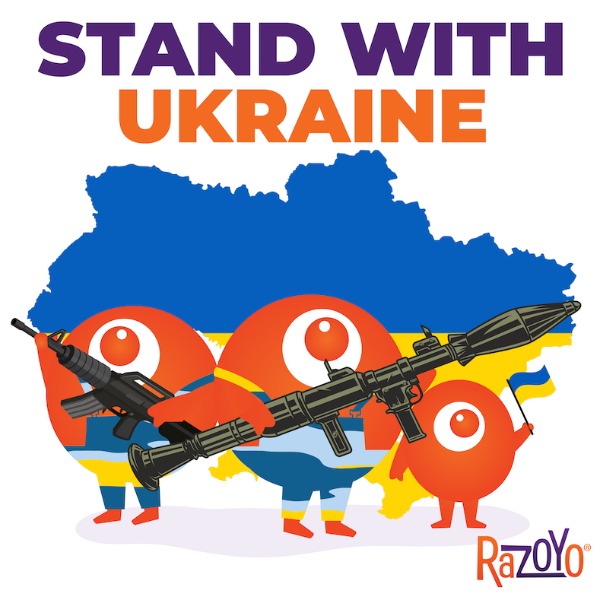
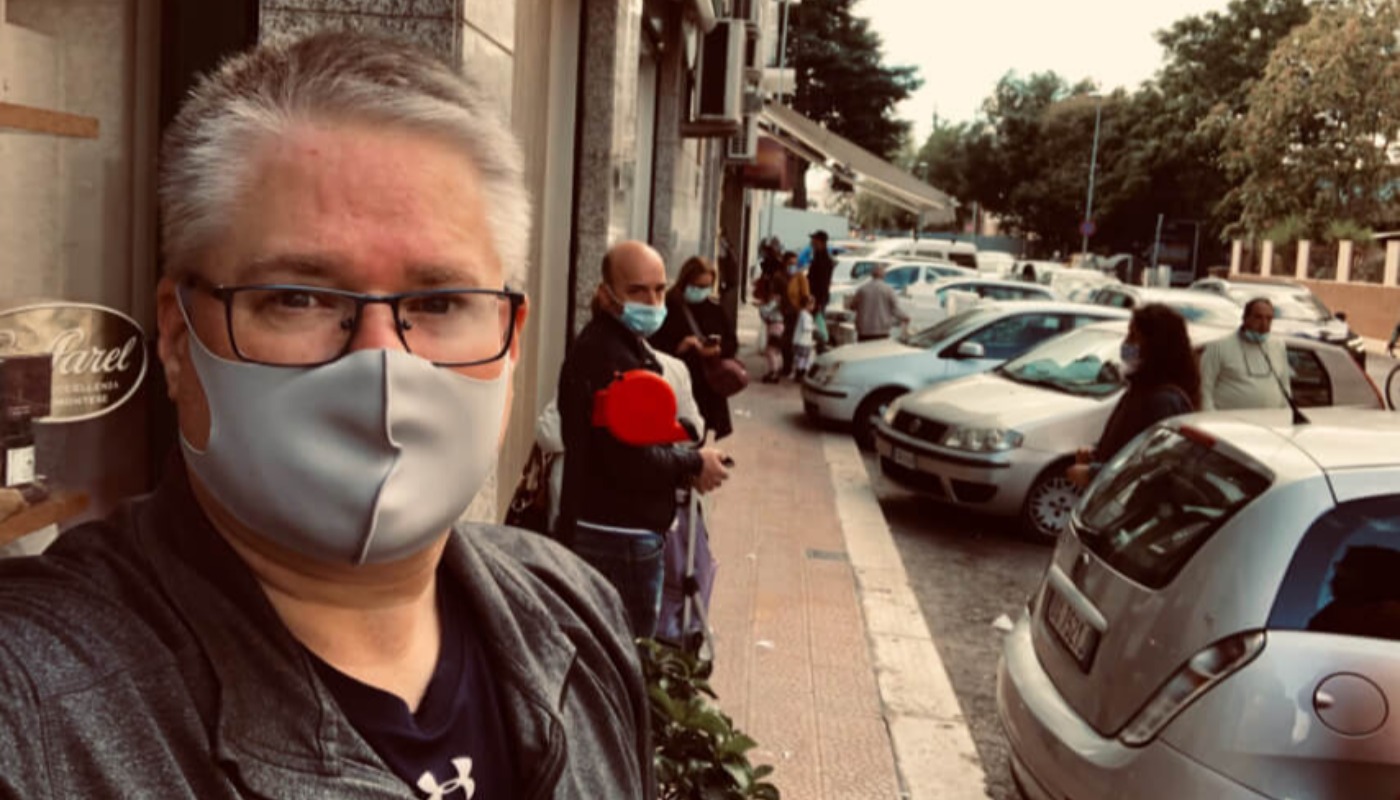
International Travel to Italy in a COVID World
Why would anyone travel to Italy from the US during a global Pandemic?!
Razoyo team members and some of our clients know that I just got back from spending a month in Italy. Last year, we planned a family vacation to Italy for this August with our kids and their spouses (no grandkids as of today… but ask me tomorrow and that may have changed).
This is not about that trip. The pandemic cancelled that trip for us.
My wife, who hails from Italy, had a close family member fall ill to an aggressive form of cancer. We decided to lend support and take care of her as much as possible. I’ll leave out the depressing bits of the story and just talk about what it is like to make such a trip during a time when most people - including us - are avoiding travel as much as possible.
Can we go?
When it became apparent that we not only needed to go, but that we needed to go now, we first had to figure out if travel was even possible since Italy had just banned tourism from the United States. With some research on the Italian Embassy website, we located the actual decrees and discovered an exception we were able to exploit, allowing us to travel due to my wife’s dual citizenship and the nature of our trip.
The catch? We not only were required to quarantine for 14 days after arrival, we also had to prove we were related, related to the family member in question, and that a medical emergency was involved.
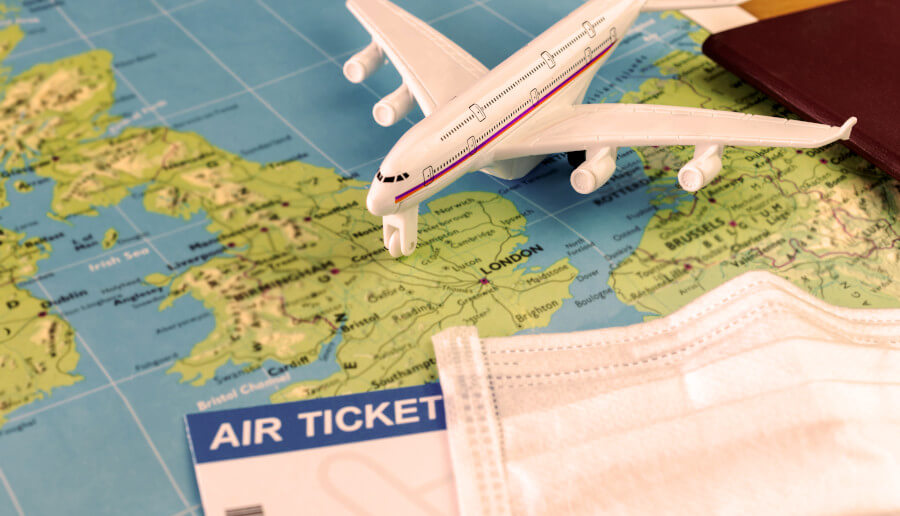
Map of England with model airplane, mask, and airline ticket.
I dug deep into the old family documents and found a flimsy, 25-year-old document with an official stamp paid for in Italian Lira, typed out on an old mechanical typewriter. This would prove we were married. Then, because my wife officially changed her last name to mine when she became a U.S. citizen, we also needed to prove her name change so they would accept her Italian birth certificate showing her relationship to the family member.
Finally, we discovered that there was even more paperwork to submit to both the Italian national government and the regional government we would be visiting (Italy has 16 regions kind of like states in the U.S., but less independent).
We submitted all of the documents online to the appropriate authorities and thought we were in the clear… Then, we got to the Dallas airport.
The British Airways agent (BTW, the BA people are all incredibly helpful) looked at our U.S. passports and kindly told us she didn’t think we could get on the plane due to the tourism ban. We then told her our full story and pulled out a pack of documents the size of a ream of paper. After a call to not just one, but two levels of supervisors in both the U.S. and the U.K., she checked our bags, printed our boarding passes, and we were on our way.
Shifting sands of travel
In addition to the legal question of “can we go,” there were logistical and budgetary considerations to make as well.
Tickets to Italy were about twice what we were used to paying. So, I grabbed a bullet, bit it, and got out my credit card. Then, because about 80% of flights have been canceled, there are fewer coinciding flights for any given path, which meant we ended up having to fly into Naples rather than directly to Bari (Palese).
10 days before our departure date, we were notified that our flights had been canceled. So, we called the airline and rescheduled. 4 days later, the rescheduled flights were also canceled, requiring us to again call and reschedule with the airline. After the first cancellation, I decided to check daily on flight status… this turned out to be one of my better moves.
Despite having a full compartment of my backpack dedicated to paperwork, when we arrived in the U.K. we were told that we were required to complete a form on the uk.gov website before we could enter the terminal. Unfortunately, wifi isn’t available in the “customs” area of Heathrow and my phone data was crawling along at about the speed of a dial up modem. We decided it was better to just keep moving forward and deal with whatever official we needed to when the time came.
Luckily, we made it through unscathed and, in fact, we were never even asked for the barcode proving we had filled out those forms. We encountered this phenomenon several times; i.e. the government tells you to fill out and submit paperwork, but has insufficient manpower to enforce the constantly-changing rules. I imagine the paperwork is never reviewed or used by anyone. This proved true in both the U.K. and in Italy.
What’s going on in southern Italy?
Much of the COVID situation in Italy is handled by local health authorities. Italy has a public health system like that in the U.K., so the government owns and runs the hospitals, pays doctors, and so forth. The difference, however, is that in Italy the public health system is run by each regional government, rather than by the national government. Thus, our paperwork in Italy was submitted to the Apulian Regional Health System.
The regional government never so much as called to confirm we were quarantining.
We received a single email… and it was an automated response. So if you’re planning a trip, know that I doubt anyone, beyond the airline, will check in on you.
When we arrived, the country already had a mask ordinance in place and most people in stores were complying. However, by the time our 14-day quarantine period ended, it had become obligatory to wear one in outdoor public spaces as well. Compliance on this was low (I personally never saw anyone get bused) and driven mainly by the threat of a 250 EUR fine.
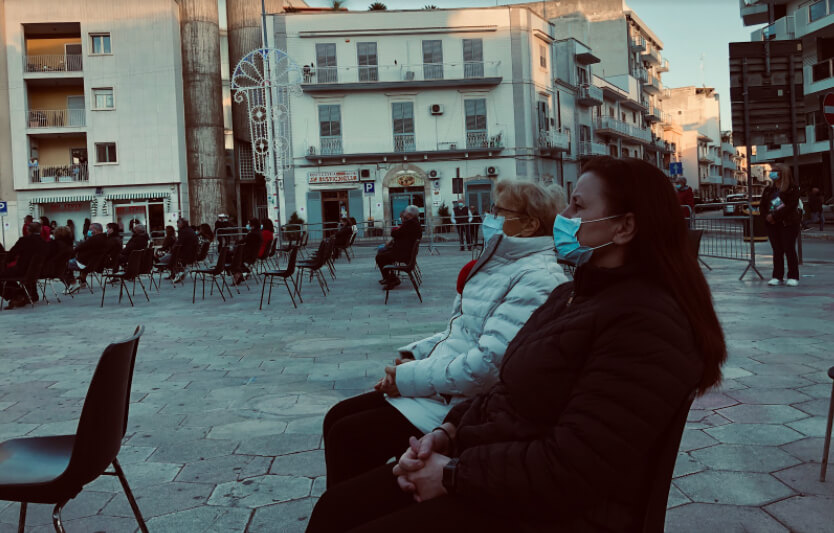
Attending an outdoor open-air mass.
Just like at home, all you see broadcasted on TV is COVID and the U.S. elections. School had just started for children across the country and news anchors reported school closures daily. In fact, some of our Italian friends had to quarantine because they came into contact with a child who had been exposed to COVID at school.
Keep in mind that in Italy, there are very few school buses and most students use public transportation. This means that the young people who were doing typical young people things (having parties, ignoring social distancing, spreading viruses, etc) were packed on public transit right next to hospital, factory and office workers.
Also, just like the U.S., there are people who are fed up with wearing masks and who love to point out these inconsistencies in the restrictions.
Run in with an anti-masker
Italy has its anti-vaxxers and anti-maskers, many of whom are disciples of Dr. Montanari, a brilliant man who makes good points, but fails to see the bigger picture.
One day, our little group, including my wife’s family member who could barely walk at that point, were sitting on a bench looking out at the sea, complying with mask ordinances and minding our own business. In the street, a man parked in a no-parking zone (Italians, right?) right next to us with his diesel engine running and the nauseating exhaust blowing right into us. After a couple of minutes, I politely asked him to either move his car forward a bit or turn off his engine.
He replied that we were hypocrites to complain about the exhaust because, by wearing masks, we were already breathing in our own toxic carbon dioxide.
While the overwhelming majority of people were kind and patient (as they are in Texas), Italy, especially Bari, has some jerks, too. It’s a worldwide phenomenon.
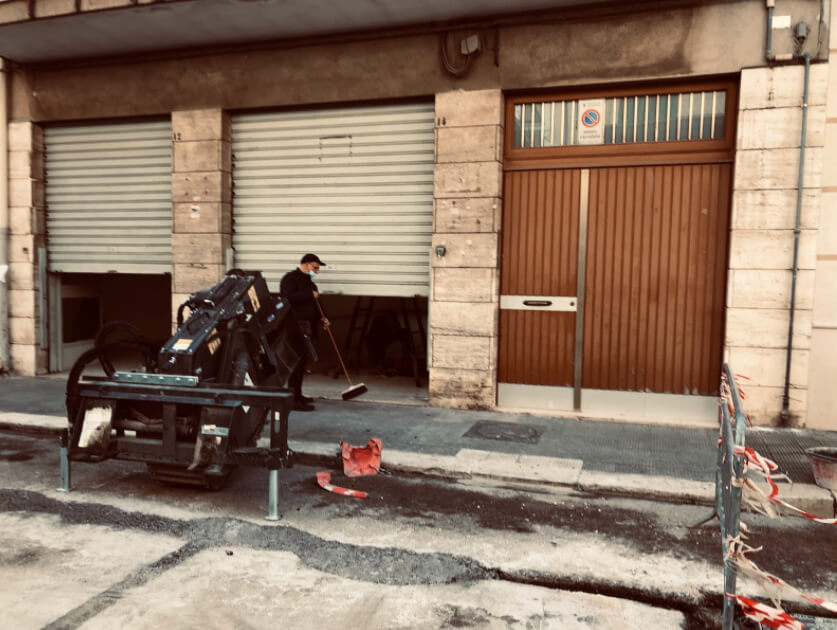
Italian worker abiding by masking regulations.
Doctors, hospitals, and heartbreak
Due to the nature of our trip, we were in daily contact with doctors of various specialties, hospitals, testing technicians, home care nurses, and the like. It was very clear that they are scared for their lives. Hospitals are closed down and only for patients. Only one other person can come with the patient to doctors appointments, and only if necessary due to the age, infirmity or disability of the patient.
Our family member ended up being scheduled for surgery just three days before we had to leave. Due to her circumstances, we had to quickly rush her to the hospital. She was initially supposed to be released before we travelled back, but ended up needing to stay a couple of extra days. So we said our goodbyes over the phone.
While she is still living, I feel like we have some idea how all the families whose loved-ones passed in hospitals or nursing homes over the last few months must have felt. In our case, we were fortunate that she was coherent enough to take phone calls. Even so, I can tell you that was devastating.
Coming home
This time we were able to complete the U.K.’s online forms before leaving Italy, but the London airport authorities still never asked for our confirmation code. At this point, the deja vu was strong as, once again, our flights were cancelled and we had to reschedule. When we finally left, the plane from Bari to Heathrow was about 15% full and the plane back to Dallas was about the same.
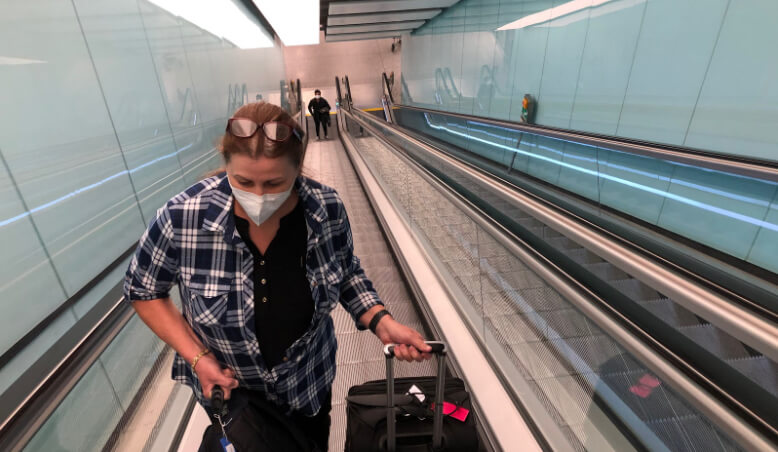
Heathrow airport, almost completely deserted.
Fortunately, the paperwork for reentry to the U.S. was simple. It was clear that if we tested positive for COVID within 10 days of coming home, we were to contact both the airline and the U.S. government. From there, social distancing and staying at home are highly encouraged, but a set quarantine is not required. That could always change tomorrow.
It turned out that we may have got out just in time as the day after we left Italy, the regional and city governments enacted stronger lockdown measures. There was even talk of closing the airport.
How to prepare for your trip
While I believe wearing a mask is important for the greater good, it was by far the worst part of travelling. Keep in mind that you are required to have it on from the moment you enter your first airport, until the moment you leave your last. On the way there, that meant 20 uninterrupted hours of mask wearing and 17 on the way back. Mentally prepare for this. It was harder than I thought.
You’ll also want to:
- Make sure you will be allowed to enter your destination country before buying your tickets.
- Consult the websites for all countries you are visiting for their individual COVID protocols and requirements. Not submitting ALL required paperwork could keep you from flying.
- Bring paper copies of everything you have submitted and the replies you received.
- Bring multiple masks. The paper ones are only good for about 4 hours so you’ll need to have spares if that is what you are using.
- Check the State Department, CDC, and your state government’s websites for instructions and requirements for coming home.
- Inform yourself of local COVID ordinances so you are compliant when there.
- Plan on quarantining for 10 to 14 days upon arrival.
- Check on the status of your flights daily starting 2 weeks before you leave. Airlines are cancelling flights in response to fluctuating government decrees.
My best recommendation?
Avoid the trip if at all possible!
Explore with AI:
These links open AI platforms with pre-written prompts about this page.





